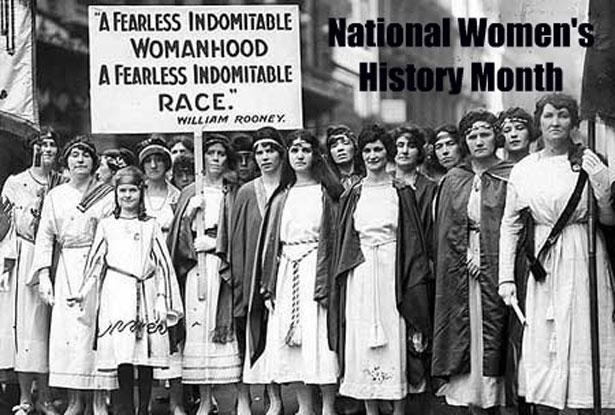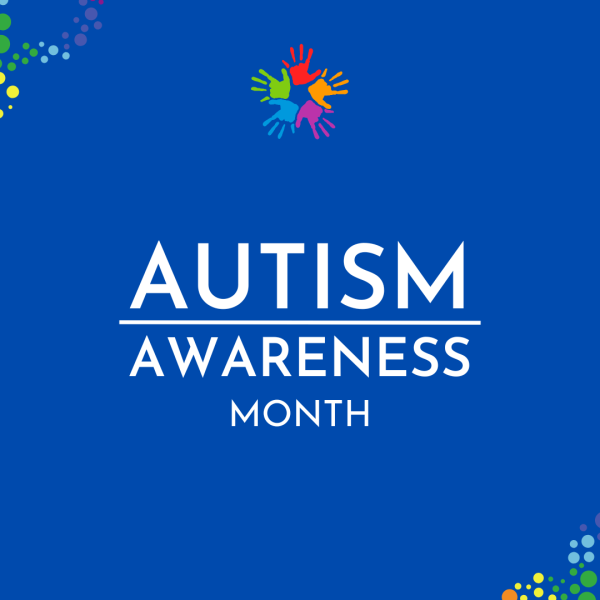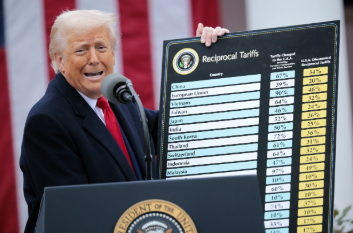Weaving the Stories of Women’s Lives
The history behind National Women’s History Month and 31 fun facts about women as a sex and important figures in women’s history.
March is National Women’s History Month and the theme for Women’s History Month 2015 is “Weaving the Stories of Women’s Lives.” This theme was chosen by the National Women’s History Project (NWHP) because “The theme presents the opportunity to weave women’s stories – individually and collectively – into the essential fabric of our nation’s history,” as written on the NWHP website. Women’s History Month is used to celebrate female historical figures as well as to address the injustices women faced and the lack of value they held in society.
Women’s History Month originated from a law that Congress passed in 1981; this law stated that the week of March 7, 1982 was to be proclaimed “Women’s History Week.” In the following five years (1982-1987), Congress passed resolutions that designated a week in March of every year as “Women’s History Week.” In 1987, Congress, after being petitioned by the NWHP, passed a law that designated March 1987 as “Women’s History Month,” and between 1988 and 1994, passed additional resolutions that required the president to proclaim March of each year as “Women’s History Month.” Since 1995, Presidents Clinton, Bush and Obama have annually proclaimed the month of March as “Women’s History Month.”
For Women’s History Month, numerous events are held: performers, authors, and speakers are brought to different venues to tell stories of female historical figures and to spread awareness of women’s history and injustices women previously and presently experience. Women’s History Month is a very important accomplishment for women and civil rights.
Here are some fun facts about women as a sex as well as important figures in women’s history:
- In the United States today, 71% of moms with kids under 18 work. In 1975, fewer than 47% did.
- Women currently hold 17% of Congressional and Senate seats and 18% of gubernatorial positions in the U.S.
- In almost every country in the world, the life expectancy for women is higher than men.
- Approximately 14% of active members in the U.S. armed forces today are women. In 1950, women comprised less than 2% of the U.S. military.
- Over 60 percent of college degrees awarded in the U.S. every year are earned by women.
- Women in the U.S. are more likely than men to get a high school diploma as well, and the numbers are only expected to rise in the coming years.
- The two highest IQs ever recorded, through standardized testing, both belong to women.
- More American women work in the education, health services, and social assistance industries than any other.
- No women or girls were allowed at the first Olympics, but the Games of Hera, featuring foot races for women, were held in Ancient Greece every four years.
- Women were not allowed to compete in track and field events at the Olympics until 1928.
- Roberta Gibb was the first woman to run and finish the Boston Marathon in 1966.
- Virne “Jackie” Mitchell, a pitcher, became the first woman in professional baseball in 1982.
- The world’s first novel, The Tale of Genji, was published in Japan around A.D. 1000 by female author Murasaki Shikibu.
- In 1921, American novelist Edith Wharton was the first woman to receive a Pulitzer Prize for fiction.
- Women often wrote under pen names in times when it was not seen as appropriate for them to contribute to literature, examples of this are J.K Rowling and Anne Bronte
- In the early years of the blues, from 1910 to 1925, the vast majority of singers were women. Some of these singers were Marion Harris and Mamie Smith.
- In an era when female painters had to struggle for acceptance, Artemesia Gentileschi was the first female to be accepted by the Accademia di Arte del Disegno in Florence.
- Marie Curie is the only woman to ever win two Nobel Prizes.
- Queen Victoria ruled one of the largest empires in the history of the world, at one point controlling land on nearly every continent.
- Martha Wright Griffiths, an American lawyer and judge, pushed through the Sex Discrimination Act in 1964 as part of the Civil Rights Act. This act has helped protect countless women on the job and in everyday life from discrimination based on their gender.
- Jane Addams was the first woman to be awarded the Nobel Peace Prize in 1931.
- Elizabeth Cady Stanton and Susan B. Anthony spent their lives fighting for women’s suffrage, but neither lived long enough to see the Amendment granting them the right to vote, enacted on August 18, 1920.
- African-American performer Josephine Baker was working in France during WWII, but not only as a singer, dancer and actress. She was also helping the war movement, smuggling numerous messages to French soldiers.
- The first woman to rule a country as an elected leader in the modern era was Sirimavo Bandaranaike of Sri Lanka, who was elected as prime minister of the island nation in 1960 and later re-elected in 1970.
- In 1756, during America’s Colonial period, Lydia Chapin Taft became the first woman to legally vote with the consent of the electorate.
- The first woman to run for U.S. president was Victoria Woodhull, who campaigned for the office in 1872 under the National Woman’s Suffrage Association.
- The first female governor of a U.S. state was Wyoming governor Nellie Tayloe Ross, elected in 1924.
- Wyoming was also the first state to give women the right to vote, enacting women’s suffrage in 1869, making it a surprising leader in women’s rights.
- The first female member of a president’s cabinet was Frances Perkins, Secretary of Labor under FDR.
- Jeannette Rankin, a Republican from Montana, was the first woman elected to serve in Congress.On May 15, 1809, Mary Dixon Kies received the first U.S. patent issued to a woman for inventing a process for weaving straw with silk or thread. Before then, most women inventors didn’t bother to patent their new inventions because they couldn’t legally own property independent of their husbands. Few could get the support necessary to turn their ideas into a reality.
- The first country to grant women the right to vote in the modern era was New Zealand in 1893.
Works Cited
“50 Fascinating Facts for Women’s History Month.” Gender Across Borders RSS. N.p., n.d. Web. 18 Mar. 2015.
“About – Women’s History Month (Library of Congress).” About – Women’s History Month (Library of Congress). N.p., n.d. Web. 18 Mar. 2015.
“National Women’s History Project.” National Women’s History Project. N.p., n.d. Web.
Your donation will support the student journalists of West Bloomfield High School. Your contribution will allow us to purchase equipment and cover our annual website hosting costs.











Lilly Richards • Apr 29, 2015 at 10:02 am
This article shares a lot of information I had not known before now. I enjoyed reading this as it was straight forward. The paragraph at the beginning of the article helped make the article more interesting. I appreciate that you left a link to your source in case I wanted to fact check. Thanks for highlighting National Women’s History month.
Jade Hatcher • Apr 29, 2015 at 9:58 am
I really like how this article shares a whole bunch of facts about women. A lot of these facts are stuff people, especially men, don’t know but they defiantly should know.
Sarah Mashigan • Apr 29, 2015 at 9:55 am
I really appreciate this article because it highlights the importance of women in our society and shows how they have impacted our world. Recently, it has been brought to my attention more than ever, that feminism is something that I think everyone should support and agree with.
Rhea Mathias • Apr 29, 2015 at 9:49 am
I’m glad this article was written because it brings attention to how amazing women are and how they were oppressed. The facts shown in the article clearly show how amazing women are.